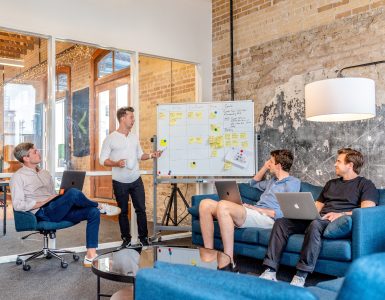Returns for a marketing campaign refer to the measurable outcomes or results achieved as a direct or indirect consequence of running that campaign. The impact of these returns on the business’s goals and objectives is the usual measure.
While measuring a campaign, one should also have a uni-directional approach to measuring success. Direct impact on sales or brand perception should be one of many ways to evaluate the campaign’s efficacy. Two reasons for the above statement:
- Just like an individual, a campaign too has different facets & personalities. Each campaign has its USPs & impacts certain kinds of returns more than others.
- If you measure the effectiveness of the other returns & understand their impact, your campaigns may always stay within expectations.
Here are a few common ways to define returns for a marketing campaign:
Financial Returns
Sales Revenue: The primary objective of many marketing campaigns is to generate direct sales and increase/decrease in revenue compared to the previous period or the same period from past years.
Return on Investment (ROI): Calculating the campaign’s profitability by comparing the generated returns to the campaign costs.
Customer-related Returns
Customer Acquisition: Attracting new customers and expanding the customer base.
Customer Retention: Having existing customers make repeat purchases and foster loyalty.
Customer Lifetime Value (CLTV): Maximizing the long-term value that customers bring to the business through increased repeat purchases, references, and loyalty.
Brand-related Returns
Brand Awareness: Increasing the visibility and recognition of the brand among the target audience.
Brand Perception: Shaping or improving how customers and stakeholders perceive the brand.
Brand Equity: Enhancing the overall value and reputation of the brand.
Engagement and Interaction Returns:
Click-through Rate (CTR): Measuring the percentage of users who clicked on a specific link or ad & visit our website.
Conversion Rate: Tracking the percentage of users who took a desired action, such as purchasing or filling out a form.
Social Media Engagement: Increasing the number of likes, comments, shares, or mentions on social media platforms.
Website Traffic: Driving more visitors to the website or specific landing pages.
Market Expansion Returns:
Market Share: Expanding the business’s market share by attracting customers from competitors.
Geographic Reach: Increasing the presence and penetration of the brand in new geographic locations or target markets.
Relationship Building Returns:
Customer Loyalty: Strengthening the emotional connection between customers and the brand to encourage repeat business and advocacy.
Customer Satisfaction: Enhancing the overall customer experience and satisfaction levels.
Data and Insights Returns:
Consumer Insights: Gather valuable data and insights about the target audience, their preferences, and behaviors.
Market Research: Obtaining market trends, competition, and industry dynamics information.
Determining your marketing campaign’s goals and objectives before defining returns is important. By aligning the returns with your business objectives, you can accurately evaluate the success and effectiveness of the campaign.





Add comment